Slate steps – what you need to know
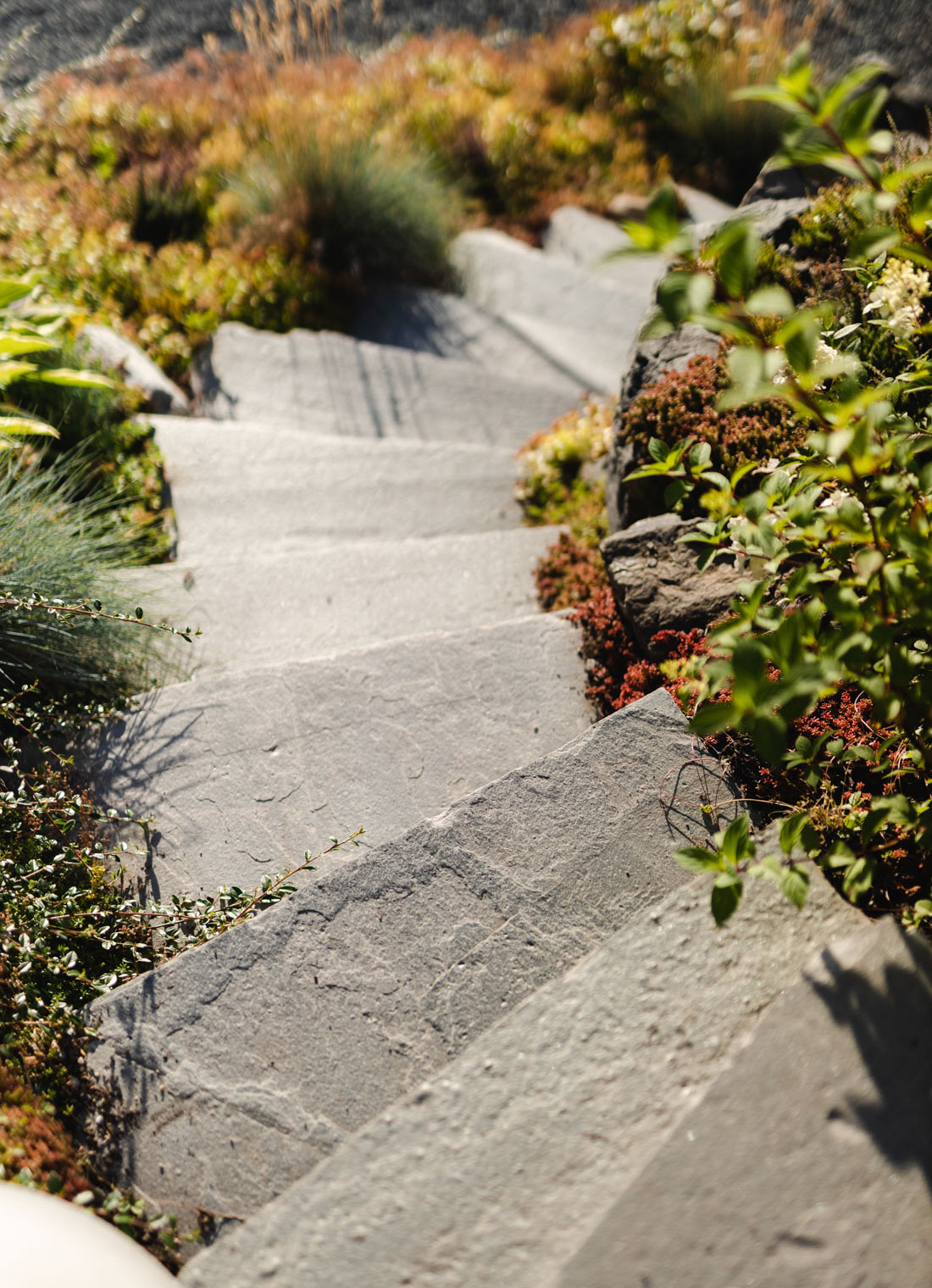

There is something special about Scandinavian slate. The natural colour structure that blends directly into any natural plot or garden facility. The front of a surface – shaped by nature over millions of years – is sorted and becomes an unprocessed step. The result is a combination of natural elegance.
– Most people want to keep the natural, untouched elements in their outdoor area. Solid natural steps with a natural step height are an elegant way to incorporate steps, frame your beds and create natural areas in your garden. After all, this is where the slate belongs.

Part of the magic of slate is that it grows into the terrain in a way that makes it look like it’s been there for 100 years. Or maybe forever. But that it’s nice to look at is of course just a small part of the story. Slate comes with a wide range of benefits.
– The most obvious is that you don’t need to use concrete. First of all, this means that you avoid both casting and glueing. Secondly, you save yourself the trouble of pre-scaling and cement slurry, explains Holthe-Berg. Last but not least, the environmental footprint is minimal.
And once you’ve got it in place, it’s not going anywhere. Solid and sturdy – ready for hundreds of new years in the elements.
– The only thing you should consider is whether the substrate is exposed to telecommunications. It’s best to have compacted, drained soil underneath, but it depends entirely on the terrain and the soil. The most important thing is to avoid the movements that can occur when the frost breaks.

Most people think that because slate is heavy, it must be hard to work with. Holthe-Berg disagrees. It’s just a matter of planning.
– If you are going to work with large natural steps, the key is having a strong crane. Then, simply lift them in place to fully assemble them. For smaller paving stones, this is not particularly complicated for someone who is not DIY-savvy, he says and adds:
– Many people even think it’s quite a fun job. There’s something about getting the twist just right when adjusting the flagstones yourself. No stone is exactly the same, and the end result is in many ways a monument to yourself.
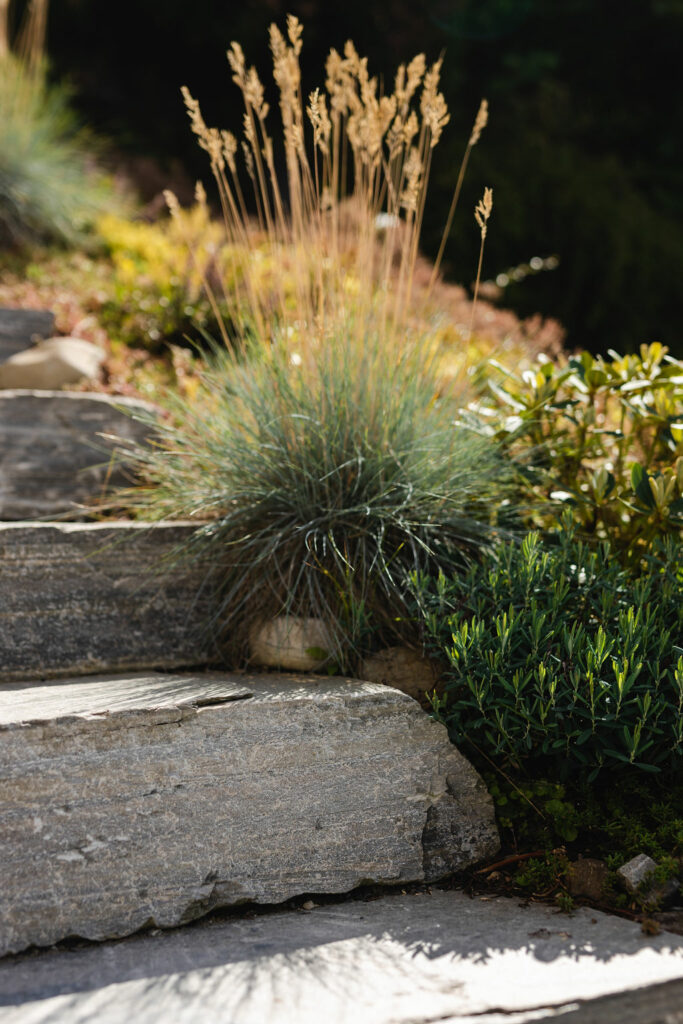
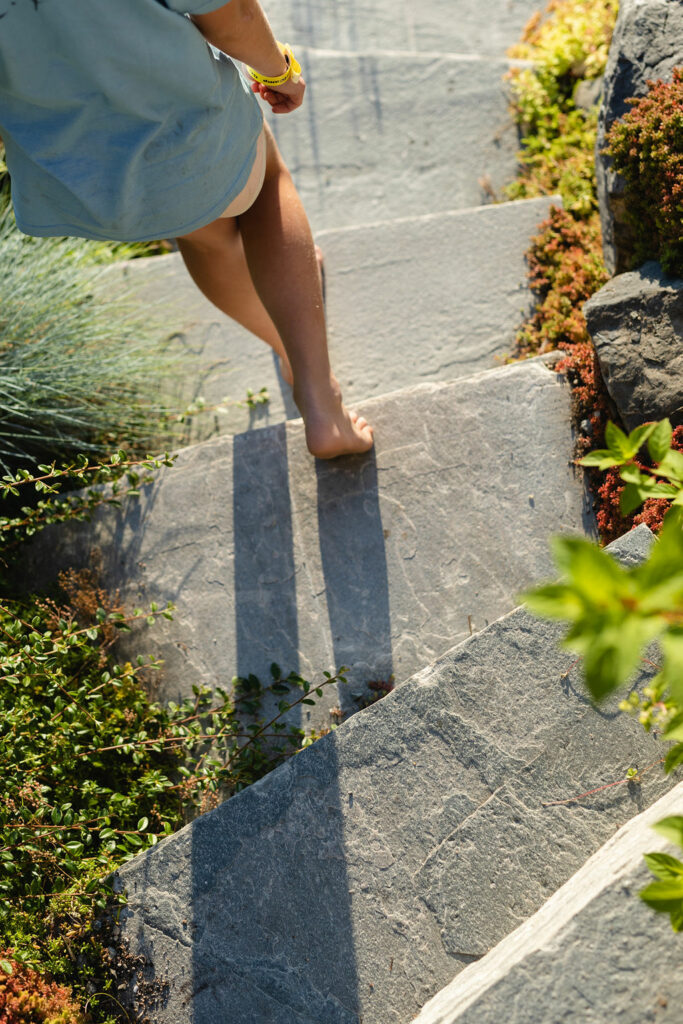
Holthe-Berg understands the impulse of choosing thinner slate slabs because they are easier to handle. But he doesn’t recommend it. On the contrary.
– It may seem easier in the moment, but it’s very annoying if they eventually start to break. My advice is that if you want slate, invest in larger, thicker tiles.
Slate is also naturally non-slip – and has a unique ability to store heat. That’s why, for many, natural stone is an obvious choice in the garden, regardless of whether they are going to have stairs, a patio or a footpath.
– They require virtually zero maintenance. All you have to do is flush them, explains Holthe-Berg, who has laid his own slate in his cabin.
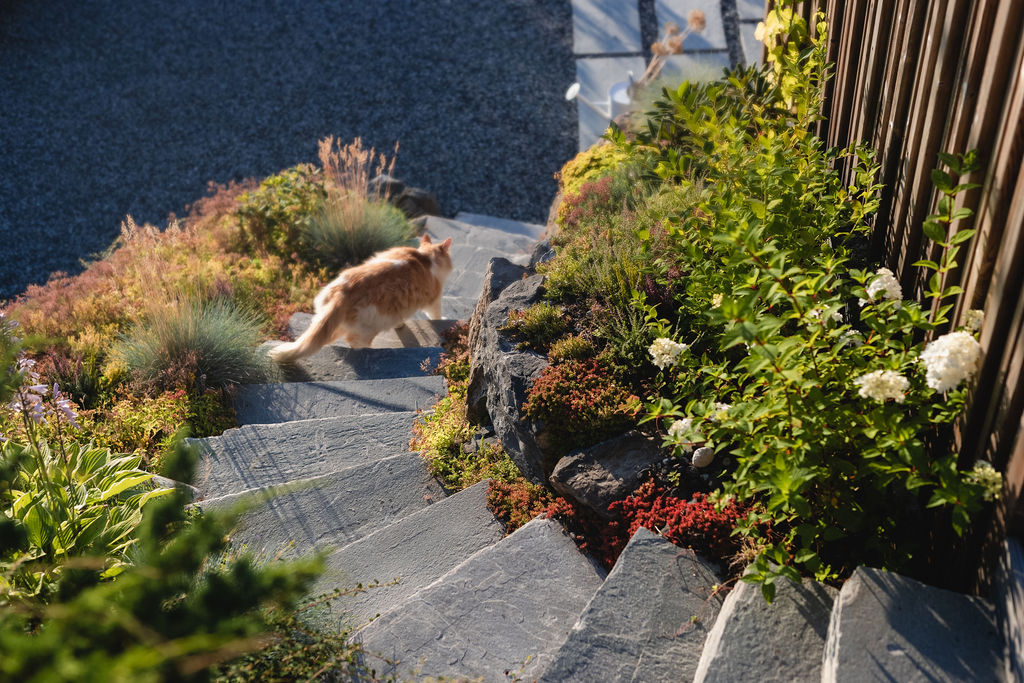
– Natural stone is also an investment that lasts. Not just physically but aesthetically. This affects the cost over time, says Holthe-Berg.
Natural stone is long-lasting. It is timeless, it survives trends, and it is very rare that people choose to replace slate. And if you want to expand in the future, there’s always a matching item. So you should always weigh up the cost in relation to the life cycle.
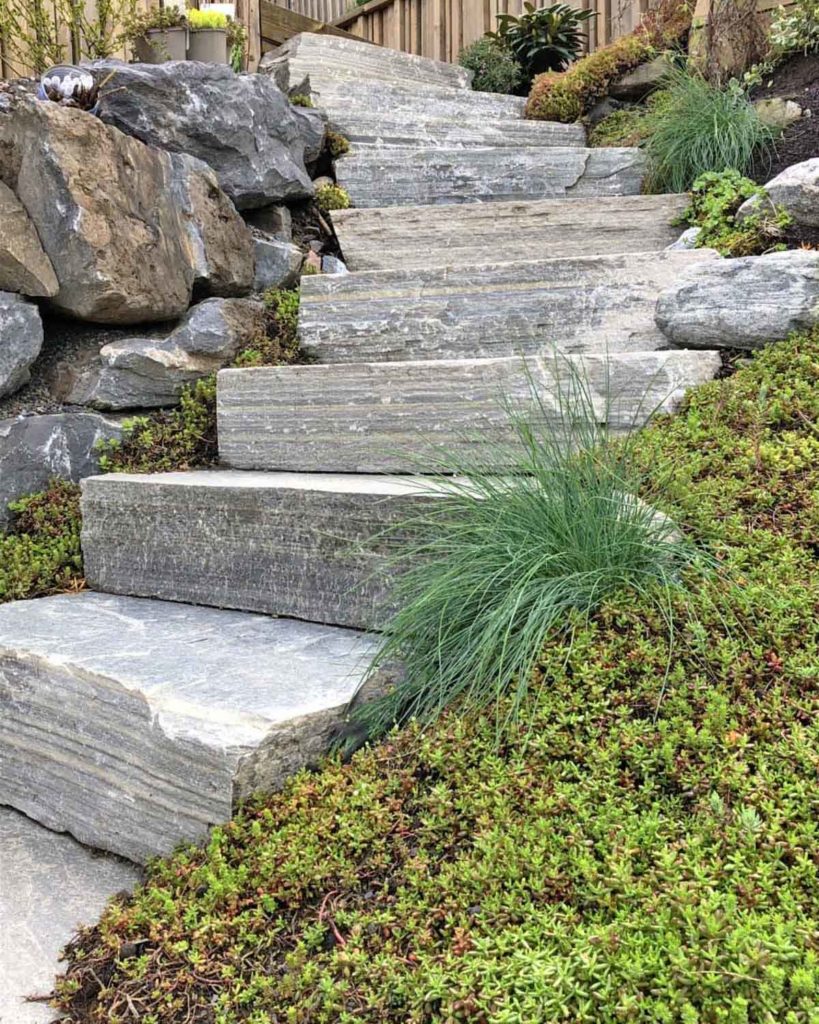
If you are laying natural stone steps, Holthe-Berg also has another tip up his sleeve: Allow for wiggle room.
– The most important thing is to assess the space and sort accordingly before you start lifting the stones into place. But this is not a product that comes in exact lengths, so you need to add some extra space here and there. Another good tip is to put the widest and longest steps at the bottom.
If you think this is going to be a tricky job, Minera Skifer’s dealers can also guide you on how to handle large panels..
– There’s always help available. And remember, once it’s in place, it’s super-sleek. And will probably last forever.